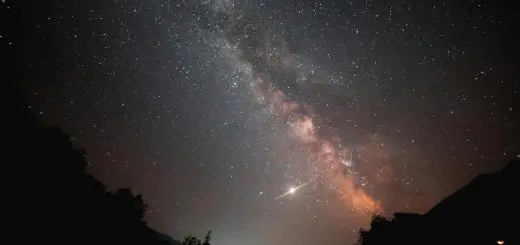How to Trace Historical Climate Change Through Travel

Looking for more amazing products? Check out our online store and explore our collection here! Happy shopping!
Before diving in, please note: This post is for informational purposes only. If you’d like to know more about how we approach topics, feel free to check out our friendly Disclaimer Page.
Hey there, amazing readers! 
We’re committed to delivering quality posts, and your support (even just sticking around despite the ads) means everything to us. So, bear with us, and thanks for helping us keep the good vibes rolling. Now, on to the fun stuff!
TRANSLATE BUTTON AT THE END OF THE ARTICLE
A Quick Overview
Climate change is an ever-present topic of discussion, and tracing its history can feel overwhelming.
But what if I told you that traveling could be your ticket to better understanding climate change?
By exploring our planet’s diverse natural landscapes and communities, we can gather firsthand knowledge about how our climate has shifted over time.
This article will guide you through various travel experiences that illuminate the impacts of climate change, offering insights on how we can appreciate and engage with our environment in a meaningful way.
Introduction: Discovering Climate Through Travel
Traveling has always been an adventure for the mind and spirit.
But beyond the joy of new experiences, it can be a powerful means of understanding the environmental changes that shape our planet.
Each destination tells a story of climate—some of resilience, others of distress.
I remember standing atop a towering glacier in Alaska, feeling both exhilarated and saddened by the sight of its retreat.
That moment ignited my curiosity about the complex relationship between our habitats and the climate.
When we travel, we engage with the world in a dynamic way.
Whether hiking through sunlit forests or wandering along windswept coastlines, we experience the tangible effects of climate change.
On a personal level, I’ve seen how shifting weather patterns impact local agriculture, or how rising sea levels threaten coastal villages.
Each journey allows me to connect with nature and understand the historical narrative of climate change.
This article will share insights on how to trace the history of climate change through travel, exploring natural landmarks, ecosystems, and cultural exchanges that reveal the intricate tapestry of our environment.
Let’s pack our bags and embark on this enlightening journey!
Why Travel Offers Unique Climate Insights
Travel opens doors to experiences we can’t find in textbooks.
When I visit a new location, I’m not just a tourist; I’m a witness to the climate story unfolding around me.
Here’s why traveling is a fantastic way to gain insights about climate change:
Direct Observation: Seeing the effects of climate change firsthand, such as melting ice caps or altered migration patterns, leaves a lasting impression.
You can’t fully grasp the urgency of the situation without experiencing it.
Diverse Perspectives: Every region has its own story to tell about climate change.
By engaging with different cultures, I’ve learned how communities worldwide adapt to environmental shifts—lessons that enrich my understanding.
Experiential Learning: Walking through a rainforest or snorkeling in a coral reef provides a sensory experience.
I remember diving in Belize and witnessing the stark contrast between vibrant, healthy coral and bleached areas.
It’s a lesson that sticks with you.
Connecting with Nature: Traveling encourages a personal connection with the environment.
Every trip I take deepens my appreciation for nature’s complexity and fragility.
Discover "The Traveler’s Guide: Your Ultimate Companion for Every Adventure
"

Engaging with Local Experts: Interacting with local guides or scientists provides insider knowledge.
They often share stories and data that may not be commonly known, offering a richer narrative about climate effects.
Travel isn’t just a hobby; it’s a chance to learn and understand the climate narrative that shapes our world.
The Role of Natural Landmarks in Climate History
Natural landmarks are like pages in a history book.
They tell us about the Earth’s climate history through their formation and alterations.
Each landmark has its own tale.
Here are some examples:
Mountains: The formation of mountain ranges not only shaped landscapes but also influenced weather patterns.
When I hiked the Rockies, I learned how they create rain shadows, affecting ecosystems on their leeward sides.
Glaciers: Glaciers are powerful indicators of climate change.
Visiting places like Glacier National Park opens our eyes to the dramatic ice loss over recent decades.
I still remember standing before the rapidly shrinking Grinnell Glacier and feeling the weight of its history.
Coral Reefs: Life beneath the waves tells a compelling story.
Coral reefs are sensitive to temperature changes.
Snorkeling in the Great Barrier Reef highlighted the vibrant ecosystems that are at risk due to warming waters.
Deserts: Arid regions reveal shifts in rainfall and temperature over time.
A trip to the Sahara illustrated how climate change influences desertification, which impacts local communities.
Each landmark connects us to the past, revealing how the Earth has transformed.
By exploring these sites, we can understand the forces that have shaped our environment.
Visiting Glacier Sites: Nature’s Time Capsules
Glaciers are like natural archives, preserving snapshots of our planet’s past.
They offer a unique perspective on climate change.
Here’s why visiting them is crucial:
Historical Records: Glaciers trap air bubbles that contain ancient atmospheric data.
By studying ice cores, scientists can piece together climate history over millennia.
Observable Changes: I’ve visited several glaciers and witnessed their retreat.
The changes, visible over just a few years, provide a stark reminder of our warming climate.
Tourism Impact: Popular glacier sites attract tourists, which can raise awareness about climate issues.
Being part of a guided tour through a glacier can spark discussions about environmental stewardship.
Local Education: Many glacier areas have visitor centers that provide educational resources.
I’ve learned so much from engaging exhibitions and knowledgeable staff.
Adventure and Action: Exploring glaciers often involves activities like hiking or ice climbing.
These adventures foster a connection to nature and challenge us to think about the impacts of our lifestyles.
As I stood on the ice of the Athabasca Glacier, I understood that these ancient giants are not just beautiful—they’re vital indicators of our planet’s health.
Exploring Fossil Sites: Clues from the Past
Fossil sites are treasures of climate history.
They can reveal how life on Earth responded to changing climates.
Here’s what I learned from visiting some remarkable fossil locales:
Understanding Extinction Events: Fossils can teach us about mass extinctions and the climate conditions that led to them.
The Museum of Paleontology in Berkeley shared fascinating insights on how prehistoric creatures adapted.
Biodiversity Indicators: The types of fossils found in a region can indicate past biodiversity.
I remember marveling at the fossil beds in the Badlands, which showcased a rich array of ancient life that thrived in a different climate.
Sedimentary Layers: Observing sedimentary layers can help us understand past environments.
Each layer tells a story of the conditions that existed when it was formed.
Engaging Hands-On Experiences: Many fossil sites offer interactive experiences where visitors can unearth fossils themselves.
This hands-on approach is thrilling and educational.
Local Partnerships: Many fossil sites collaborate with local researchers to share their findings.
By attending lectures or talks during my visits, I’ve gained firsthand knowledge from experts.
Fossil sites remind us that climate has always been in flux.
Understanding past shifts helps us anticipate future changes.
The Importance of Local Ecosystems in Climate Study
Local ecosystems are like living laboratories where we can observe climate change in real time.
Here’s why exploring these ecosystems matters:
Biodiversity Hotspots: Ecosystems rich in biodiversity demonstrate how species adapt to changing climates.
I’ve seen this firsthand in the Amazon rainforest, where diverse species coexist in harmony.
Ecosystem Services: Healthy ecosystems provide services like clean air, water, and pollination—vital for human survival.
I was amazed to learn how wetlands filter water and protect coastlines.
Symbolic Indicators: Certain species serve as indicators of environmental health.
For example, the decline of bee populations signals problems in our ecosystems.
Observing these changes helps us grasp the urgency of climate issues.
Cultural Significance: Ecosystems are intertwined with local cultures.
I’ve witnessed how indigenous communities manage their resources sustainably, adapting to climate changes over generations.
Conservation Efforts: Many traveling opportunities involve volunteer work in conservation.
Planting trees or participating in wildlife surveys not only helps local ecosystems but also deepens our connection to the area.
By immersing ourselves in local ecosystems, we learn about the delicate balance of life and the impact of climate change on biodiversity.
Engaging with Local Communities: Knowledge Exchange
Local communities are custodians of climate history, often holding invaluable knowledge about their environment.
Here’s how engaging with them enriches our understanding:
Traditional Knowledge: Communities often possess a deep understanding of their land and climate.
I remember sharing stories with an Inuit elder about how changing sea ice patterns affected their traditional hunting practices.
Adaptive Strategies: Many communities have developed unique strategies to cope with climate change.
Learning about these can inspire us to adopt sustainable practices in our own lives.
Cultural Narratives: Every culture has its own stories about nature and climate.
These narratives can provide context for understanding climate impacts over generations.
Collaborative Projects: Engaging in community-driven projects can yield mutual benefits.
I participated in reforestation efforts in Costa Rica, working alongside locals to restore their forests.
Empathy and Connection: Building relationships with local people fosters empathy.
It reminds us that climate change affects not just landscapes, but lives and cultures.
Traveling isn’t just about the sights; it’s about the people we meet and the stories they share.
How Museums Showcase Climate Change Over Time
Museums serve as guardians of knowledge, often providing insights into climate change through artifacts and exhibits.
Here’s how they can enhance our understanding:
Educational Exhibits: Museums often display engaging and informative exhibits about climate science.
I find that interactive displays invite visitors of all ages to learn.
Historical Context: Many museums present historical artifacts that illustrate how communities have adapted to climate shifts.
For example, the Smithsonian’s National Museum of Natural History features exhibits on past climate changes and their effects.
Local Climate Data: Museums often house local climate data that researchers use to track long-term changes.
Engaging with this data can offer a clearer picture of what we’re up against.
Workshops and Talks: Many museums host events led by experts.
I’ve attended lectures that provided in-depth information about climate impacts specific to that region.
Community Engagement: Museums often collaborate with local communities to showcase their stories.
This collaboration helps highlight the human element of climate change.
By visiting museums, we gain a broader understanding of climate change and its implications over time.
Eco-Tourism: Traveling Responsibly for Climate Awareness
Eco-tourism is a fantastic way to travel while supporting sustainability.
Here’s why it matters:
Support for Conservation: Eco-tourism initiatives often channel funds back into conservation efforts.
When I visited an eco-lodge in Costa Rica, I learned how my stay contributed to protecting local wildlife.
Sustainable Practices: Many eco-tourism operators prioritize sustainable practices.
Whether it’s using renewable energy or minimizing waste, these practices make a difference.
Community Empowerment: Eco-tourism often focuses on empowering local communities.
By engaging local guides, we help provide income while learning from their expertise.
Awareness Raising: Eco-tourism experiences often raise awareness about climate issues.
I remember participating in a sea turtle conservation project that opened my eyes to the struggles these creatures face due to climate change.
Personal Connection: Eco-tourism fosters a deeper connection to nature.
It encourages us to be mindful travelers, appreciating the beauty and complexity of our environment.
Traveling responsibly not only enhances our experiences but also contributes to a healthier planet.
Documenting Your Findings: Keeping a Travel Journal
Keeping a travel journal is a simple yet powerful way to document your climate insights.
Here’s how to make the most of it:
Personal Reflections: Jotting down your thoughts helps solidify your experiences.
I find that writing about my feelings during a glacier hike makes the experience even more vivid.
Recording Observations: Take note of climate-related changes you observe, like unusual weather patterns or local conservation efforts.
Sketching and Photos: Don’t forget to include sketches or photos.
Visuals can enhance your memories and provide context for your written reflections.
Interviews and Conversations: Write about conversations with locals or experts.
These stories bring depth to your understanding of climate issues.
Action Plan: Use your journal to create a personal action plan.
Reflecting on what you’ve learned can inspire you to make changes in your lifestyle.
Your travel journal becomes a treasure trove of insights, preserving your experiences for years to come.
Ways to Share Your Climate Travel Stories
Sharing your travel experiences can inspire others to care about climate change.
Here are effective ways to do so:
Social Media: Use platforms like Instagram or Facebook to share photos and stories.
Captivating visuals paired with thoughtful captions can reach a wide audience.
Blogs and Articles: Start your own blog or write articles to delve deeper into your experiences.
I’ve found that writing allows me to reflect on my understanding of climate issues.
Community Presentations: Organize a presentation at local community centers or schools.
Sharing your findings can educate and inspire others to explore climate change.
Photo Exhibits: Consider showcasing your photographs in a local gallery.
This can spark community discussions about climate change and conservation.
Collaborating with NGOs: Partnering with environmental organizations can amplify your message.
Many NGOs welcome stories and experiences that align with their mission.
Your stories can serve as a bridge, connecting people to the pressing issues of climate change.
Conclusion: The Joy of Learning Through Adventure
Traveling to trace historical climate change is more than just a journey; it’s an enlightening adventure.
Each destination offers lessons about our planet’s past and its future.
By witnessing nature’s beauty and fragility firsthand, we cultivate a deeper understanding of climate change.
From engaging with local communities to exploring natural landmarks, every experience adds a layer to our knowledge.
By documenting our findings and sharing our stories, we become advocates for the planet.
The joy of learning through adventure is abundantly rewarding.
So, grab your backpack and set out on a journey that connects you to the Earth’s climate story.
Each step you take can lead to new insights, inspiring others along the way.
Adventure awaits, and with it, a chance to make a difference!

The Enlightenment Journey is a remarkable collection of writings authored by a distinguished group of experts in the fields of spirituality, new age, and esoteric knowledge.
This anthology features a diverse assembly of well-experienced authors who bring their profound insights and credible perspectives to the forefront.
Each contributor possesses a wealth of knowledge and wisdom, making them authorities in their respective domains.
Together, they offer readers a transformative journey into the realms of spiritual growth, self-discovery, and esoteric enlightenment.
The Enlightenment Journey is a testament to the collective expertise of these luminaries, providing readers with a rich tapestry of ideas and information to illuminate their spiritual path.
Our Diverse Expertise
While our primary focus is on spirituality and esotericism, we are equally passionate about exploring a wide range of other topics and niches 

To ensure we provide the most accurate and valuable insights, we collaborate with trusted experts in their respective domains 
Our blog originally focused on spirituality and metaphysics, but we’ve since expanded to cover a wide range of niches. Don’t worry—we continue to publish a lot of articles on spirituality! Frequently visit our blog to explore our diverse content and stay tuned for more insightful reads.
Hey there, amazing reader! 
Check out our store here and take a peek at some of our featured products below! Thanks for being awesome!










